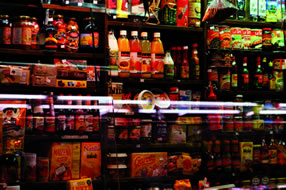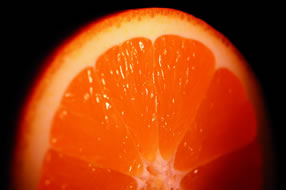Besides the fact that we have to use sunglasses and sunscreen products (article “Our Friend the Sun”, Vedere Oltre n. 2, December 2007), we have to take care of ourselves from the inside by paying attention to the food we eat.
Experts agree on the efficiency of the Mediterranean diet, but is there food that can best protect our health during this time of the year? We asked Dr. Fiorenza Bertacchi, dietician at the St. Orsola-Malpighi University Polyclinic Hospital in Bologna.
What elements can protect us specifically from exposure to the sun and where can we find them?
“What we eat can help us reduce the negative effects of exposure to the sun thanks to natural antioxidants. Antioxidants are abundant in fruits and vegetables, not only for the vitamins they contain, but mostly because of the presence of a combination of complex substances such as: bioflavonoids found in flavonoids contained in citrus fruits, apricots, cherries, grape, parsley, berries, and soy's isoflavonoids; polyphenols like quercetin contained in cereals, legumes, fruit juices, teas, wine and herb teas. Vitamin A (dairy products, eggs, liver, meat and fish) and carotenoid (beta-carotene found in carrots and lycopene found in tomatoes, fruits and vegetables that are yellow, red and dark green) create a barrier effect protecting us from the penetration of UV rays. At the retina level, vitamin A is useful in forming visual pigment. Beta-carotene also stimulates the production of melanin and enhances the production of skin pigments that act as a sunscreen on the whole body helping sun tanning and maintaining it.
Anthocyanin are among the most important groups of pigments responsible for the red, purple, and blue colours of many fruits, vegetables, cereal grains and flowers (it is the colour of the cornflower). They protect flowers and even our skin against UV rays and can be found in gooseberries, blueberries, cherries, grape, strawberries, eggplants, raspberries and red wine.
Vitamin C, whose antioxidant action has been known for a long time, is contained in citrus fruits, strawberries, kiwis, peppers, black gooseberries and green leaf vegetables.
Minerals such as selenium, zinc, and copper do not have per se a direct antioxidant action, but are necessary to guarantee the functionality of our organism's antioxidant systems. Among medicinal plants, green tea, and also oregano, sage, and rosemary can help us fight the oxidative stress".
Today, when we speak about oxidative processes, free radicals and ageing, we also think about age-related macular degeneration, a chronic, progressive disease which is now known as the main cause of low vision in the Western world.
“Ageing and family predisposition are two of the greater risk factors, among other associated factors, as for example extended exposure to sunrays.
Two pigments in particular are found in high concentration in the retina: lutein and zeaxanthin, and it seems that high values in the blood can protect the retina itself from the length of damaging light waves.”


“These substances are called xanthophylls and are found in spinach, corn kernels, egg yolks, peppers, orange juice, but are often used, in particular lutein, as an additive (E161b) in confectioner's products, jams, and fruit cans, decorations, soups, mustard and cheeses.
Lutein is used as a pharmacologically active principle in food supplements, associated in particular to carotene, and some integrators. Even zeaxanthin is a natural yellow-orange colouring substance, used and codified as food colouring (E161h).
Up to now, we have talked about appropriate habits for all, more specifically, in regards to children, are there any other precautions to take?
“Children should eat like adults, but a particular attention should be paid to liquid loss. Therefore, they should be given water, fruit salads, fruit shakes and natural fruit juices without added sugar; fruit ice cream; simple meals, prepared with antioxidant vegetables, avoiding elaborate meals rich in fat.”